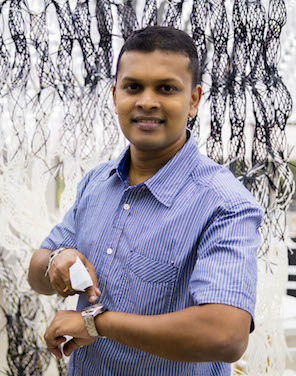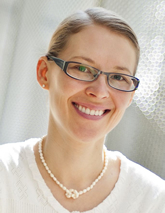Related Research Articles
The Innovators Under 35 is a peer-reviewed annual award and listicle published by MIT Technology Review magazine, naming the world's top 35 innovators under the age of 35.
Parham Aarabi is a professor and entrepreneur from Toronto, Canada.
The Special Class for the Gifted Young is a program aimed to select gifted young students to enter the universities in China. First established in 1978 at the University of Science and Technology of China, it was a major innovation in China's higher education. The idea was suggested by renowned scientists such as Tsung-Dao Lee, C. N. Yang, and Samuel C. C. Ting, and supported by the then Vice-premier of the State Council Fang Yi. The objective of the class is to explore the most efficient ways to nurture promising youth. Peking University, Tsinghua University, Nanjing University, Wuhan University, Jilin University, Shanghai Jiaotong University and Huazhong University of Science and Technology also launched similar programs. But they were all shut down for all kinds of reasons. Currently, only the University of Science and Technology of China and Xi'an Jiaotong University still have this program.
Utkan Demirci is a tenured professor and a successful serial academic entrepreneur at Stanford University at the departments of Radiology and Electrical Engineering. He served as the Interim Division Chief and Director of the Canary Center at Stanford for Cancer Early Detection in the Department of Radiology.
Michelle Khine is an American bioengineer who is a distinguished scientist and innovator at the University of California, Irvine, co-founder of Fluxion Biosciences Inc., the scientific founder of the Shrink nano-technology platform, as well as the Assistant and Founding Professor of the School of Engineering at UC Merced. Khine, an associate biomedical engineering professor in the Henry Samueli School of Engineering, is responsible for experimenting with childhood toys Shrinky Dinks to build microfluidic channels. Her research has enabled technological advances in industries including biological research and medical diagnostics.
Erik Winfree is an American applied computer scientist, bioengineer, and professor at California Institute of Technology. He is a leading researcher into DNA computing and DNA nanotechnology.
Aaron Dollar is a professor of Mechanical Engineering & Materials Science and Computer Science at Yale University, where he serves as the lead investigator of the GRAB Lab. His research focuses on analysis, design, and control of compliant mechanisms. In 2010, he was recognized as an innovator by being included in the MIT Technology Review's TR35 list.

Robert Joseph Cava is a solid-state chemist at Princeton University where he holds the title Russell Wellman Moore Professor of Chemistry. Previously, Professor Cava worked as a staff scientist at Bell labs from 1979–1996, where earned the title of Distinguished Member of the Technical Staff. As of 2016 his research investigates topological insulators, semimetals, superconductors, frustrated magnets and thermoelectrics.

Suranga Nanayakkara is a Sri Lankan born computer scientist and inventor. As of 2021, he is the director of Augmented Human Lab and associate professor at the National University of Singapore. Before moving to Auckland in 2018, he was an assistant professor at Singapore University of Technology and Design. He is best known for his work on FingerReader and Haptic Chair. His research interests include Wearable Computing, Assistive Technology, Ubiquitous computing, AI, Collective intelligence and Robotics. MIT Technology Review honored Nanayakkara as one of the Innovators Under 35 for Asia Pacific Region 2014.

Hao Li is a computer scientist, innovator, and entrepreneur from Germany, working in the fields of computer graphics and computer vision. He is co-founder and CEO of Pinscreen, Inc, as well as associate professor of computer vision at the Mohamed Bin Zayed University of Artificial Intelligence (MBZUAI). He was previously a Distinguished Fellow at the University of California, Berkeley, an associate professor of computer science at the University of Southern California, and former director of the Vision and Graphics Lab at the USC Institute for Creative Technologies. He was also a visiting professor at Weta Digital and a research lead at Industrial Light & Magic / Lucasfilm.
Mariangela Lisanti is an American theoretical physicist and an associate professor of physics at Princeton University. Her work focuses on understanding dark matter and dark energy using tools developed through artificial intelligence.

Yueh-Lin (Lynn) Loo is a Malaysian-born chemical engineer and the Theodora D. '78 and William H. Walton III '74 Professor in Engineering at Princeton University, where she is also the Director of the Andlinger Center for Energy and the Environment. She is known for inventing nanotransfer printing. Loo was elected a Fellow of the Materials Research Society in 2020.

Jeffrey Michael Heer is an American computer scientist best known for his work on information visualization and interactive data analysis. He is a professor of computer science & engineering at the University of Washington, where he directs the UW Interactive Data Lab. He co-founded Trifacta with Joe Hellerstein and Sean Kandel in 2012.
Tee Chee Keong Benjamin is a Singaporean scientist. He helped to co-develop the electronic skin technology when he was a PhD student in Stanford University. In 2015, he was chosen as one of TR35 list for his work on e-skin. The only Singaporean on the 2015 TR35 list, e-skins could potentially make prosthetic limbs as sensitive as human ones and enable intuitive human machine interactions. In 2019, he co-developed an underwater self-healing transparent material that could be useful in marine environments.
Naside Gözde Durmuş is a Turkish scientist and geneticist. She is currently Assistant Professor of Radiology at Stanford University. Her research focuses on nanotechnology and micro-technology applications on current world-threatening health issues, like cancer and antibiotic resistance. In 2015, MIT Technology Review listed her under the category of pioneers in the magazine's list of 35 Innovators Under 35.
Miriah Meyer is an American computer scientist and USTAR professor at the University of Utah. She is noted for her pioneering work in data visualization for research applications. She received an American Association for the Advancement of Science Mass Media Science & Engineering Fellowship in 2006 and served as a reporter for The Chicago Tribune. She was named in MIT Technology Review's TR35 list in 2011 and Fast Company's list of the 100 most creative people in 2012. She was named a 2013 TED Fellow for her work in interactive visualization.
Nanshu Lu is an associate professor at the University of Texas at Austin where she leads the Lu Research Group in the department of aerospace engineering and engineering mechanics. She also holds a courtesy appointment in the department of biomedical engineering. Lu is recognized for her work on the integration of electronics into stretchable materials compatible with human tissue, for which she was named one of the Top 35 innovators under the age of 35 by the MIT Technology Review in 2012.
Richard Royal Lunt is a chemical engineer, materials scientist, physicist, and the Johansen Crosby Professor of Chemical Engineering and Materials Science at Michigan State University (MSU) in East Lansing, Michigan, in the United States. He is most well known for the development of invisible solar cells.

Alexandra Boltasseva is Ron And Dotty Garvin Tonjes Distinguished Professor of electrical and computer engineering at Purdue University, and editor-in-chief for The Optical Society's Optical Materials Express journal. Her research focuses on plasmonic metamaterials, manmade composites of metals that use surface plasmons to achieve optical properties not seen in nature.

Prineha Narang is an American physicist and computational material scientist. She is a Professor of Physical Sciences and Howard Reiss Chair at the University of California, Los Angeles (UCLA). Narang currently serves as a U.S. Science Envoy approved by the Secretary of State to identify opportunities for science and technology cooperation. Before moving to UCLA, she was first an Environmental Fellow at Harvard University Center for the Environment and then an Assistant Professor in the John A. Paulson School of Engineering and Applied Sciences at Harvard University. Narang’s work has been recognized internationally by many awards and a variety of special designations, including the Mildred Dresselhaus Prize, the 2021 IUPAP Young Scientist Prize in Computational Physics, a Friedrich Wilhelm Bessel Research Award from the Alexander von Humboldt Foundation, and a Max Planck Sabbatical Award from the Max Planck Society. Narang also received a National Science Foundation CAREER Award in 2020, was named a Moore Inventor Fellow by the Gordon and Betty Moore Foundation for the development for a fundamentally new strategy for single molecule sensing and environmental toxin metrology using picoscale quantum sensors, CIFAR Azrieli Global Scholar by the Canadian Institute for Advanced Research, and a Top Innovator by MIT Tech Review. Narang was awarded a Guggenheim Fellowship in 2023.
References
- ↑ "MIT Technology Review". MIT Technology Review.